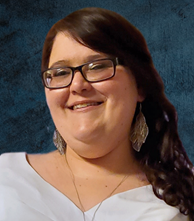Inclusive language focuses on showing respect to people from all walks of life. That’s why we all should use the most accurate and relevant language whenever possible. Here are a few ways languages continue to change.
Why does language change over time?
Language constantly adapts and changes to reflect our changing lives, experiences, and cultures. Language changes over time for several reasons:
- Trade & migration: As cultures interact, people begin borrowing words from one another. For example, avatar, tsunami, and sudoku are recent “loanwords” from other languages.
- Technology: New words are created to match modern inventions. Your great-great-grandparents didn’t need words like podcast, selfie, or clickbait because cellphones didn’t exist.
- Old words with new meanings: Before computers and the internet came along, mouse, surf, and web had completely different meanings.
How are languages becoming more inclusive?
Some languages like Persian, Finnish, Estonian, and Chinese don’t automatically assign gender to words while many Romance languages use a binary system. According to The Washington Post, languages with traditionally male or female grammar options have started using:
- English: “They/Them” for nonbinary gender identities
- Spanish: Alternative, inclusive case endings such as ‘x’ or ‘@’ and ‘e’
- Arabic: The dual as neutral and gender-bending the binary—“huma” (هما) and “intuma” (انتما)— as a gender-neutral alternatives.
- Swedish: ‘Hen’ as singular and gender-neutral alternative to the male pronoun “han” and female “hon”
None of these alternatives are set standards and aren’t officially recognized by all speakers or governments. However, as more time passes and non-binary genders become more accepted worldwide, we’ll see how languages continue to grow and change.
Did you know?
The English language has a history of changing commonly used pronouns over time. For example, “thou” was the singular version of today’s word “you,” when it was used as a subject (e.g., “Acquaint thyself with a physician before thou have need of him.”).
Helpful tips
Here are a few ways you can be more inclusive in your everyday communications:
- Use gender-neutral terms and plain language whenever possible
- Refrain from using or enforcing stereotypes
- Implement person-first language (“person with a disability” rather than “disabled employee”)
- Avoid misusing inaccurate, negative descriptors like “mental,” “crazy,” or “OCD”
- Remember that discussing someone’s age or appearance can be upsetting—avoid these topics unless everyone in the discussion feels comfortable
Looking for more interesting information about languages?
Check out these links:
- Does the language we speak shape the way we think?
- Speed or efficiency? Why some languages seem faster than others
- A brief history of American Sign Language
- Common acronyms in the language services industry explained
We’re here to help
Contact our team at getstarted@cyracom.com today to ask questions or set up a zero-risk consultation.











